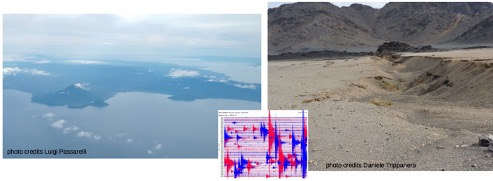
The vEGU21 abstract submission is now open until 13 January 2021!! Every week from now on we will highlight a GMPV session on our blog to help you navigating your way through the wild jungle of almost 700 available EGU sessions!
Today we will start our journey with session SM6.1: “Earthquake swarms and complex seismic sequences driven by transient forcing in tectonic and volcanic regions“, co-hosted by GMPV9/NH4/TS4. The session is convened by Luigi Passarelli, Simone Cesca, Federica Lanza, Francesco Maccaferri, Maria Mesimeri. The conveners say:
Earthquake sequences usually start with a large magnitude earthquake followed by a flurry of smaller events that localize around the first and largest one. This type of seismic activity, named mainshock-aftershock sequences, represents localized ruptures along a single fault or a fault population steadily loaded elastically by the long-term tectonic strain. However, not all the seismicity behaves as such: at volcanoes seismicity typically appears in form of sustained seismic activity, lasting over variable time ranges and typically accompanying fluid transfer, while in tectonic regions there are multiple examples of seismicity deviating from more traditional mainshock-aftershock sequences.
Left panel: Jailolo volcano, Indonesia and seismic swarm 2015. Right panel: Graben faulting formed after dike intrusion in 2009 at Harrat Lunayyir, KSA.
The seismicity that does not conform with mainshock-aftershock sequences can be generally labeled as earthquake swarms or complex seismic sequences and shows complexity in the spatial and temporal pattern, and strain energy release. Volcanic and tectonic swarms share many similarities because they primarily occur in regions rich of fluids and are triggered by transient loading processes such as fault creeping, slow slip events, and magmatic/fluid intrusions. Yet, the physics behind such processes and the ultimate reasons for the occurrence of swarm-like rather than mainshock-aftershock sequences, is still far beyond a full understanding. This session seeks contributions to open up a discussion on a larger and integrated perspective for studying volcanic and tectonic swarm-like seismicity, to dig in the physical processes, while drawing similarities that can further contribute to our understanding of the physics of fluid-faulting interaction.
If you feel like your research fits in, since you are dealing with earthquake swarms or complex seismic sequences that cannot be labeled as classic mainshock-aftershock sequences, you may think to submit an abstract to the session here.

